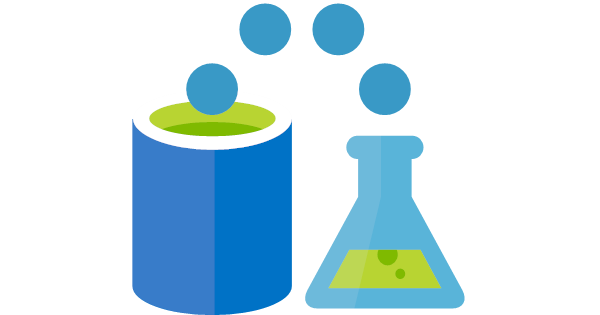Unveiling the Power of Azure: A Journey into Open Datasets
 Sumit Mondal
Sumit MondalTable of contents
- Introduction
- Azure Open Datasets: Unleashing the Potential
- The Benefits of Azure Open Datasets
- Hands-On Example: Predictive Analytics with Azure Open Datasets
- Step 1: Accessing the Dataset
- Step 2: Exploring the Dataset
- Step 3: Setting Up Azure Machine Learning Workspace
- Step 4: Data Preprocessing
- Step 5: Building the Predictive Model
- Step 6: Model Evaluation and Deployment
- Conclusion

Introduction
In the ever-evolving landscape of technology, data has become the lifeblood of innovation. Harnessing the potential of vast datasets is crucial for businesses and researchers alike. Microsoft Azure, a cloud computing platform, offers a treasure trove of opportunities for data enthusiasts. In this blog, we'll delve into the fascinating realm of Azure Open Datasets, exploring its capabilities, benefits, and providing a hands-on example to showcase its real-world applications.
Azure Open Datasets: Unleashing the Potential
Azure Open Datasets is a collection of diverse, curated datasets ready to fuel your machine learning and analytical endeavors. This open-access repository simplifies the process of discovering, accessing, and utilizing data for various applications. The datasets cover a wide range of domains, including finance, healthcare, climate, and more, making it a versatile resource for professionals in different fields.
The Benefits of Azure Open Datasets
Accessibility: One of the primary advantages of Azure Open Datasets is its accessibility. The platform provides a centralized hub where users can easily discover and access a plethora of datasets, eliminating the need for extensive search and procurement processes.
Quality and Reliability: Azure Open Datasets are carefully curated and maintained, ensuring the quality and reliability of the data. This is crucial for data scientists and researchers who rely on accurate and up-to-date information for their analyses.
Time and Cost Efficiency: By offering pre-processed and pre-configured datasets, Azure Open Datasets save valuable time and resources. Users can skip the time-consuming data cleaning and formatting steps, allowing them to focus on extracting meaningful insights from the data.
Versatility: The diverse nature of the datasets available on Azure Open Datasets makes it a versatile resource for a wide range of applications. Whether you're working on predictive modeling, natural language processing, or image recognition, you're likely to find a dataset that suits your needs.
Hands-On Example: Predictive Analytics with Azure Open Datasets
Let's take a practical look at how Azure Open Datasets can be used for predictive analytics. In this example, we'll use the NYC Taxi and Limousine Commission (TLC) Trip Record dataset to predict taxi trip durations.
Step 1: Accessing the Dataset
To access the NYC TLC Trip Record dataset, navigate to the Azure Open Datasets portal in the Azure portal. Search for the "nyc-tlc" dataset, and you'll find the TLC Trip Record dataset among the available options.
Step 2: Exploring the Dataset
Once you've selected the NYC TLC Trip Record dataset, explore its contents to understand the available columns, data types, and other relevant information. This step is crucial for gaining insights into the structure of the data and identifying potential features for your predictive model.
Step 3: Setting Up Azure Machine Learning Workspace
Before diving into the model development, set up an Azure Machine Learning workspace. This will serve as the environment for building and deploying machine learning models on Azure.
Step 4: Data Preprocessing
Clean and preprocess the dataset to handle missing values, outliers, and other data anomalies. This step is essential for ensuring the quality of the data and improving the performance of your predictive model.
Step 5: Building the Predictive Model
Using Azure Machine Learning tools and libraries, build a predictive model based on the NYC TLC Trip Record dataset. You can choose from various algorithms, such as linear regression or decision trees, depending on the nature of your prediction task.
Step 6: Model Evaluation and Deployment
Evaluate the performance of your model using appropriate metrics. Once satisfied with the results, deploy the model as a web service on Azure, making it accessible for real-time predictions.
Conclusion
Azure Open Datasets opens up a world of possibilities for data enthusiasts, offering a seamless and efficient way to access high-quality datasets. In this blog, we've explored the benefits of Azure Open Datasets and walked through a hands-on example of building a predictive model using the NYC TLC Trip Record dataset. As technology continues to advance, the importance of accessible and reliable data cannot be overstated, and Azure Open Datasets proves to be a valuable asset in this data-driven era. So, take the plunge into the world of Azure Open Datasets and unlock the potential of your data-driven projects.
Subscribe to my newsletter
Read articles from Sumit Mondal directly inside your inbox. Subscribe to the newsletter, and don't miss out.
Written by

Sumit Mondal
Sumit Mondal
Hello Hashnode Community! I'm Sumit Mondal, your friendly neighborhood DevOps Engineer on a mission to elevate the world of software development and operations! Join me on Hashnode, and let's code, deploy, and innovate our way to success! Together, we'll shape the future of DevOps one commit at a time. #DevOps #Automation #ContinuousDelivery #HashnodeHero